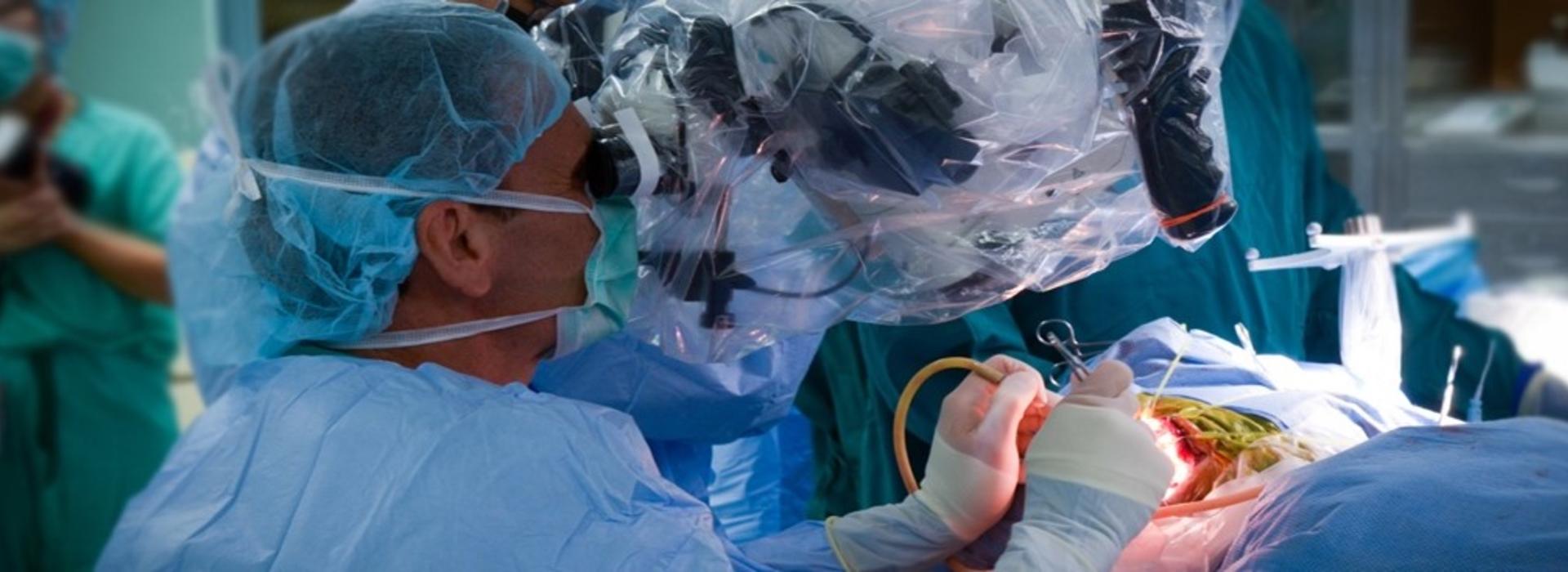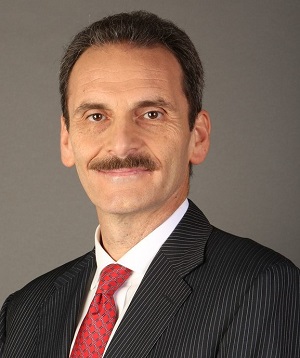
Alumni Spotlight: Jacques Morcos, MD, FRCS, FAANS, 1990-1993
When U of M neurosurgery residency program alumnus Dr. Jacques Morcos is asked about what makes being a neurosurgeon worthwhile, he is quick to answer. “The look in the patient’s eyes when things go well,” he said. “You’ve worked years to train and perfect your skills and patients come to you and put their trust in you … seeing all of that come to fruition with a happy patient is unbelievable.”
Because the brain still holds a place of mystery for most patients, operating on it is scary, he noted, adding, “When it goes well, the level of patient satisfaction is superior to that from most other medical procedures.”
Lifelong fascination
As professor and co-chairman of the Department of Neurosurgery at the University of Miami, with a joint appointment in the Department of Otolaryngology, Dr. Morcos (pictured here) credits his high school biology teacher for instilling in him a fascination with the central nervous system. “He was fantastic and helped me decide, at the age of 16, to become a neurosurgeon,” said Dr. Morcos.

He obtained his BSc with High Distinction and his MD from the American University of Beirut and began his neurosurgery residency in the United Kingdom. Dr. Morcos (pictured here), however, had always wanted to do his residency training in the United States. Based on the University of Minnesota program’s reputation, Dr. Morcos applied for an open resident position outside of the typical match cycle, which explains his abbreviated time at the U (a typical neurosurgery residency is seven years). “After interviewing me and the other applicants, Department Chairman Dr. Roberto Heros offered me a position,” he said. “I jumped at the opportunity.”
Golden age
The educational quality of the U’s program was what attracted Dr. Morcos. “I consider the early ‘90s the golden age of the program under Dr. Heros’ leadership,” he said. “It was what prepared me for my career.” He added that his cerebrovascular/skull base fellowships at the University of Florida in Gainesville, and at The Barrow Neurological Institute in Phoenix, AZ, also had a tremendous impact.
In addition to preparing him for his neurosurgical career, Dr. Morcos fondly recalls the “brotherhood” of the U of M program that left him with lifelong friendships with his co-residents.
Learning a new healthcare system
Residency in a new country, however, wasn’t always easy. “Having grown up in Lebanon, the entire U.S. healthcare system was brand new to me,” he said. “I had to adjust to how healthcare was delivered and it was very confusing at first.”
Dr. Morcos’ range of clinical and research expertise includes all skull base and complex brain tumors, endoscopic skull base surgery, microvascular decompression, radiosurgery, and all aspects of cerebrovascular surgery including AVMs, cavernomas, bypass surgery for complex aneurysms, moyamoya, and ischemic disease.
Over the years, Dr. Morcos has taken on numerous leadership roles within the neurosurgery profession. He is president-elect of the World Federation of Skull Base Societies and completed a year as the inaugural chairman of the American Association of Neurosurgical Surgeons (AANS) Global Strategy initiative. During its 2023 annual meeting, Dr. Morcos was named AANS president-elect and will assume that role of president during the 2024-2025 term.
Not a simple field
When asked what advice he gives aspiring neurosurgeons, Dr. Morcos said that they should shadow neurosurgeons of different types, both in private and academic practice. “You want to make sure it’s something you’re going to dedicate your life to because it’s not a simple field,” he said. “The concept of being a neurosurgeon may seem attractive or even romantic to trainees but make sure you have the passion and dedication to do it. It’s demanding.”
Dr. Morcos has authored close to 200 publications and chapters, given almost 1,000 national/international invited presentations/courses, and has been invited as a visiting professor 100 times. To date, he has trained 30 Fellows in cerebrovascular and skull base surgery. He has been married to his wife Fiona for 30 years and they have three children.



